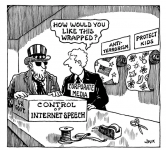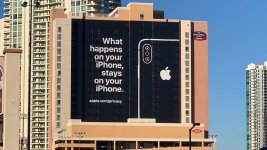
The task Apple intends its new surveillance system to perform—preventing their cloud systems from being used to store digital contraband, in this case unlawful images uploaded by their customers—is traditionally performed by searching
their systems. While it’s still problematic for anybody to search through a billion people’s private files, the fact that they can only see the files you gave them is a crucial limitation.
Now, however, that’s all set to change. Under the new design,
your phone will now perform these searches on Apple’s behalf before your photos have even reached their iCloud servers, and—
yada, yada, yada—if enough "forbidden content" is discovered, law-enforcement will be notified.

I intentionally wave away the technical and procedural details of Apple’s system here, some of which are quite clever, because they, like our man in the handsome suit, merely distract from the most pressing fact—the fact that, in just a few weeks, Apple plans to erase the boundary dividing which devices work for you, and which devices work for them.
Why is this so important? Once the precedent has been set that it is fit and proper for even a "pro-privacy" company like Apple to make products that betray their users and owners, Apple itself will lose all control over how that precedent is applied. As soon as the public first came to learn of the “spyPhone” plan, experts began investigating its technical weaknesses, and the many ways it could be abused, primarily
within the parameters of Apple’s design. Although these valiant vulnerability-research efforts have produced
compelling evidence that the system is seriously flawed, they also seriously miss the point: Apple gets to decide whether or not their phones will monitor their owners’ infractions for the government, but it's
the government that gets to decide what constitutes an infraction... and how to handle it.














